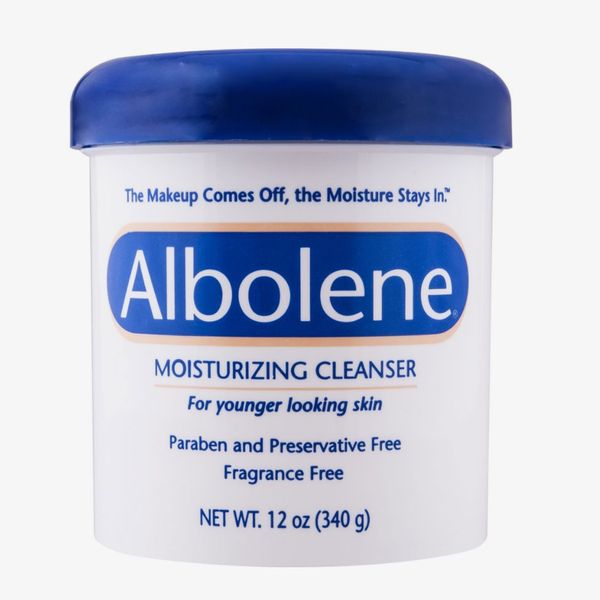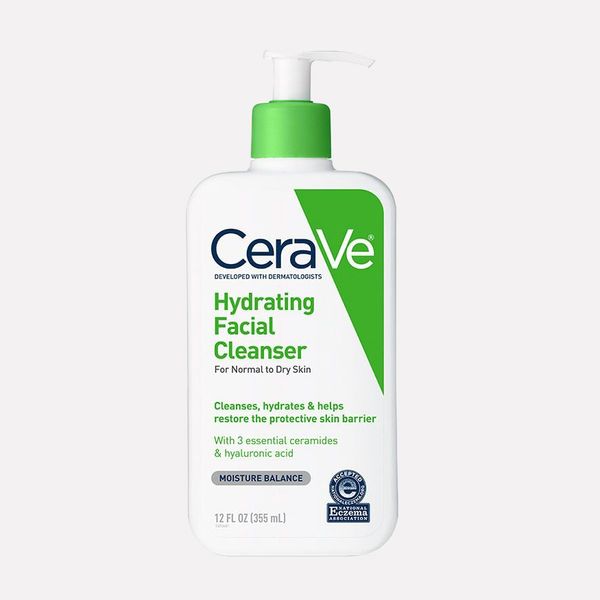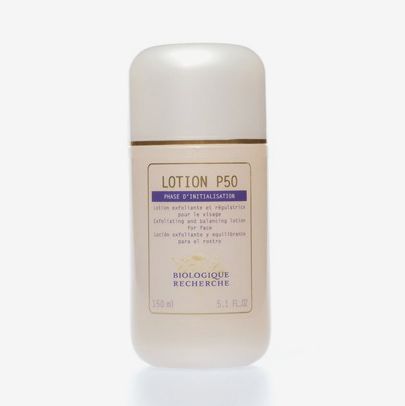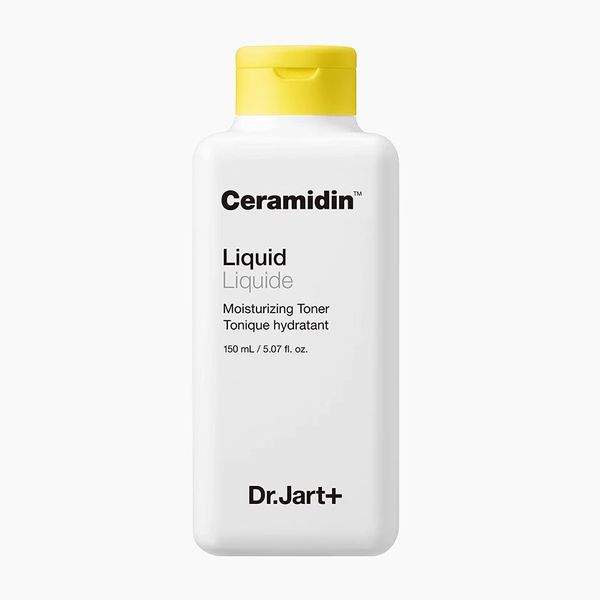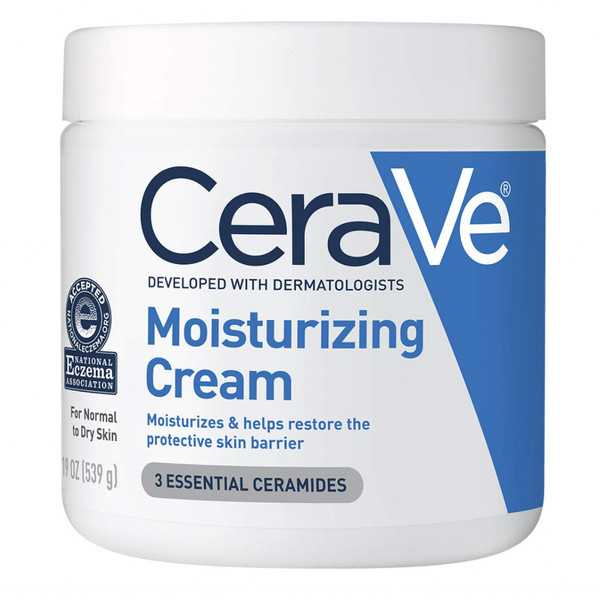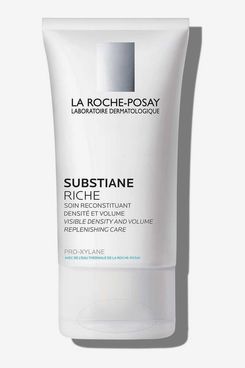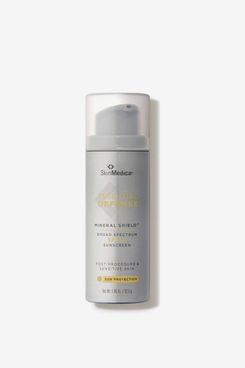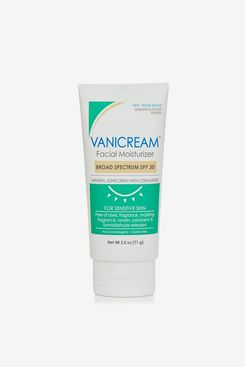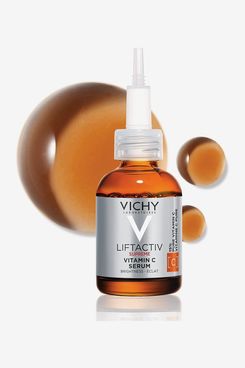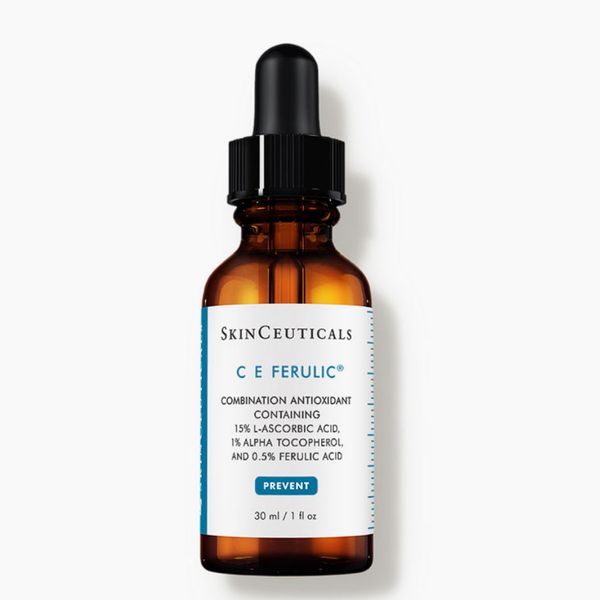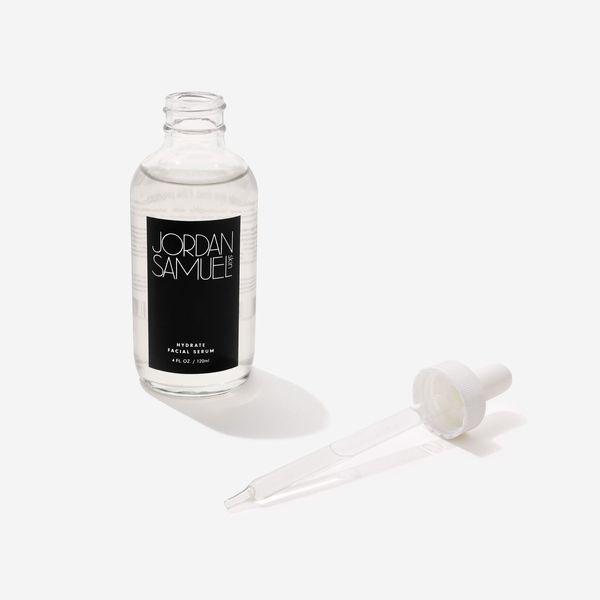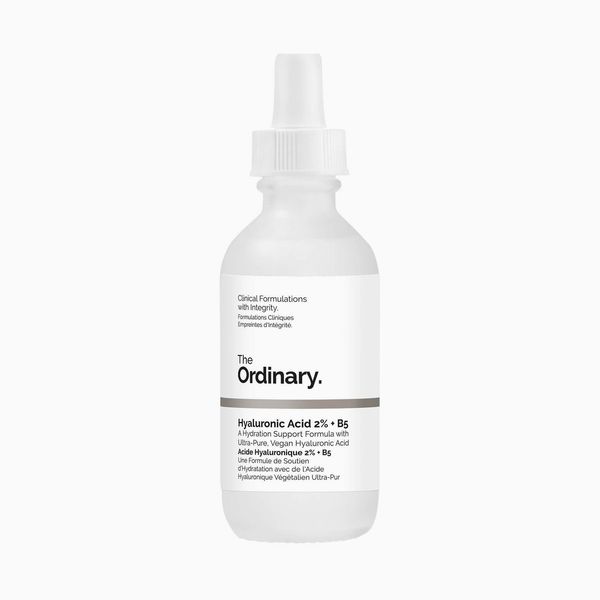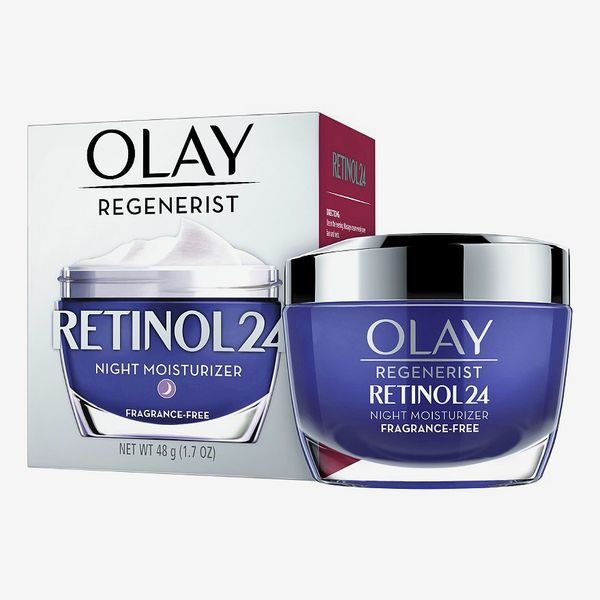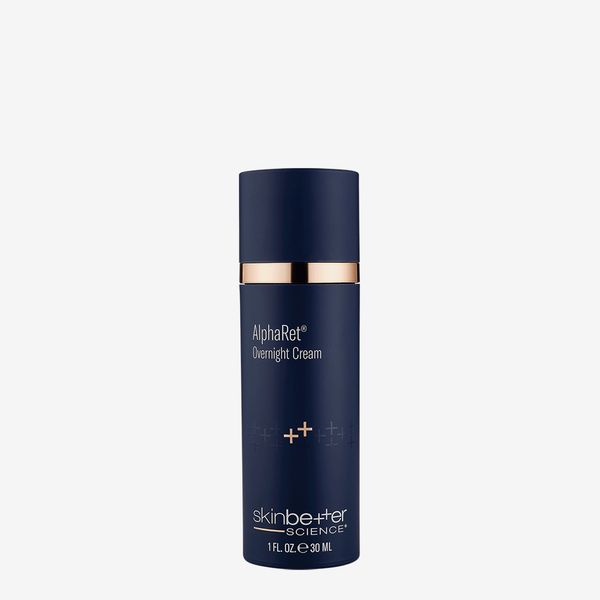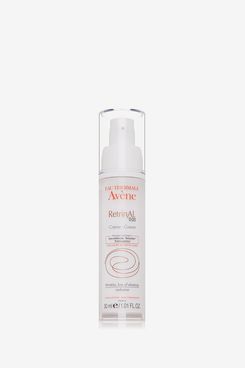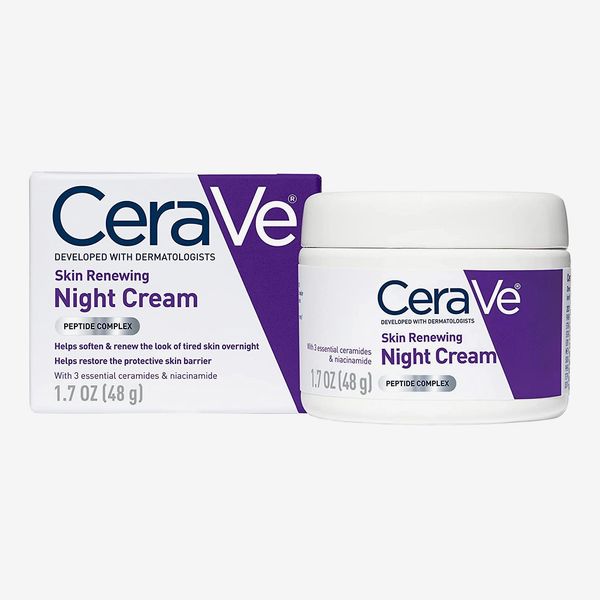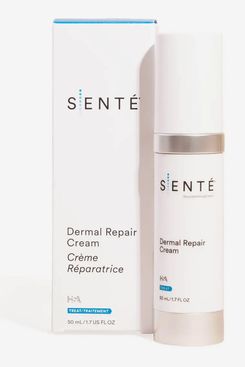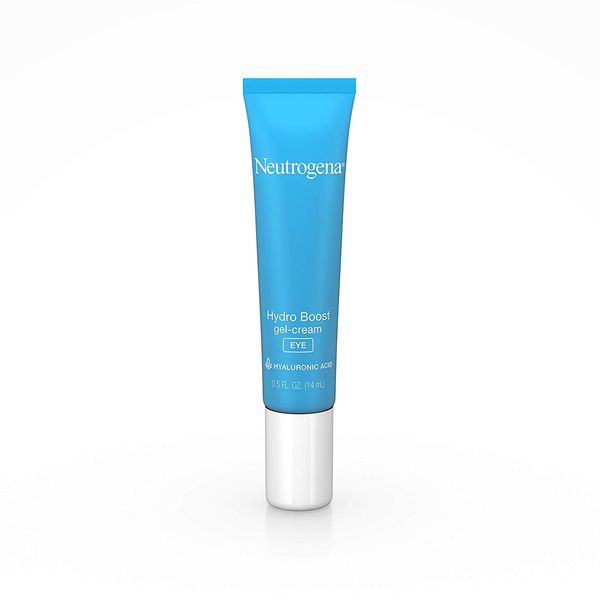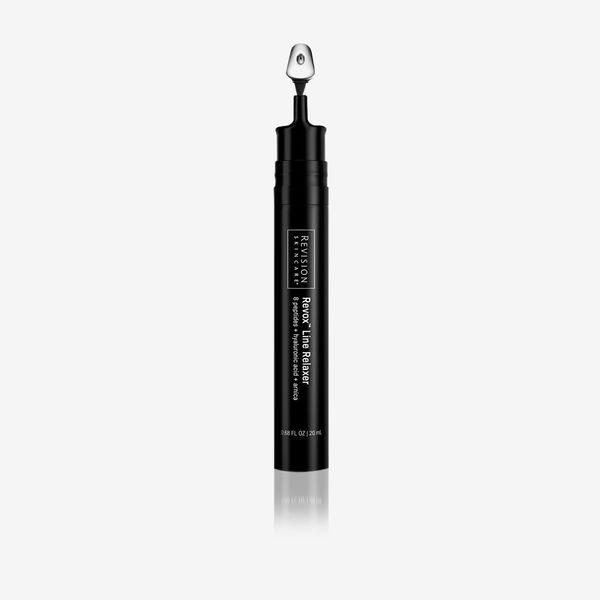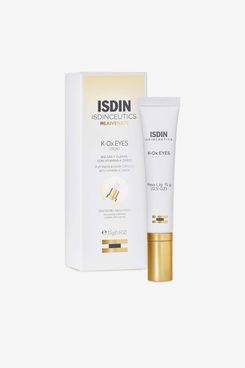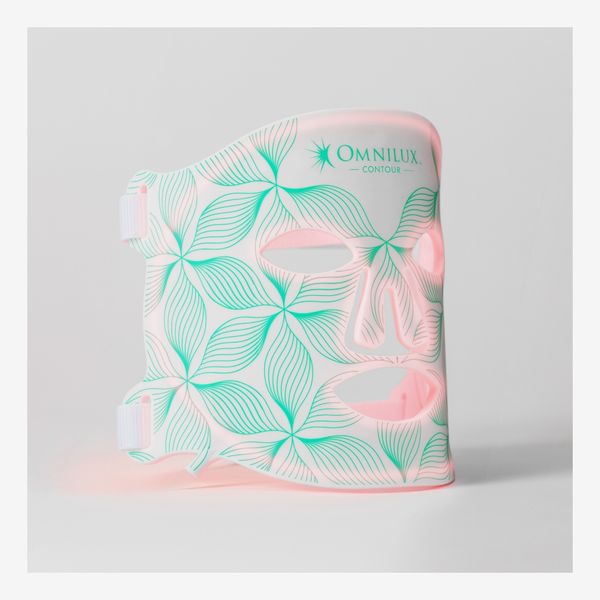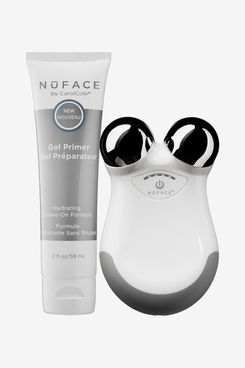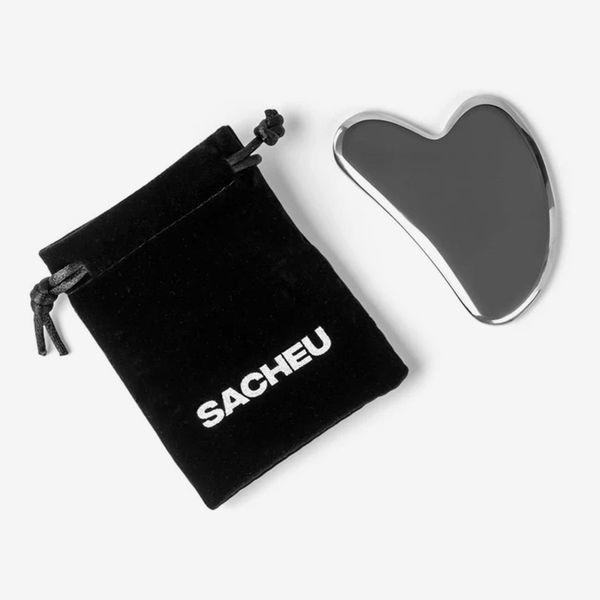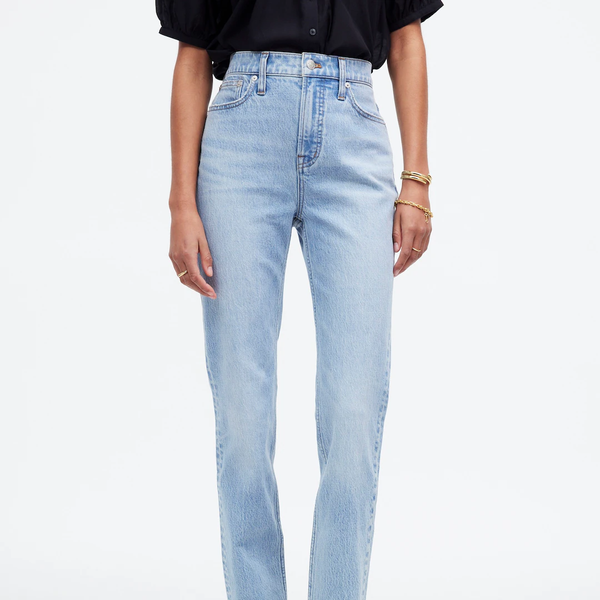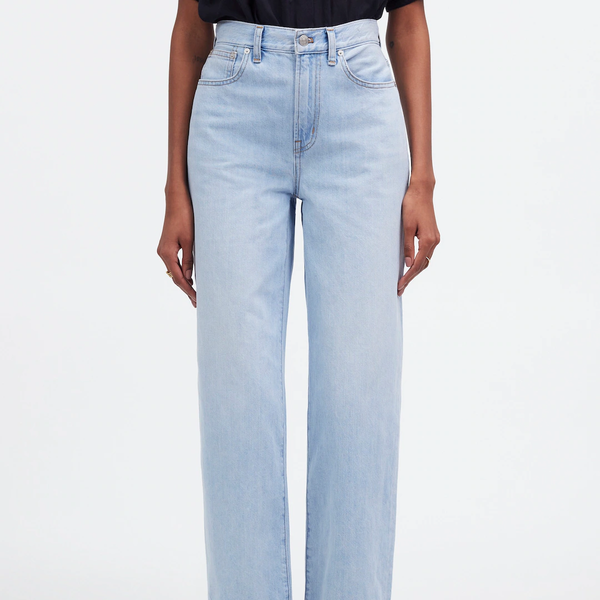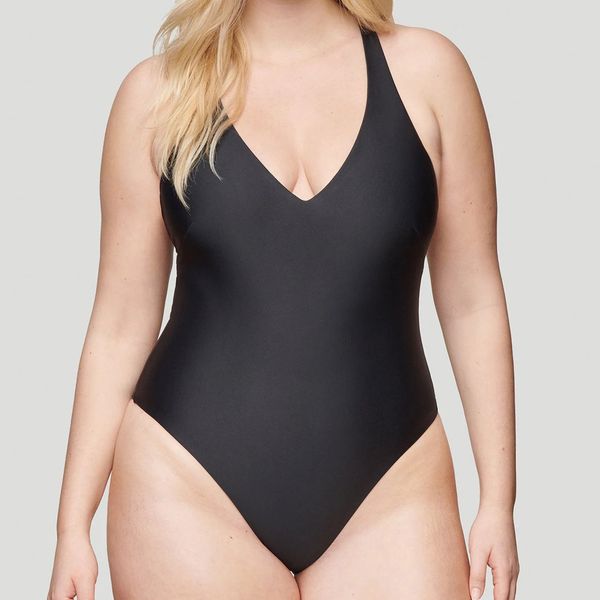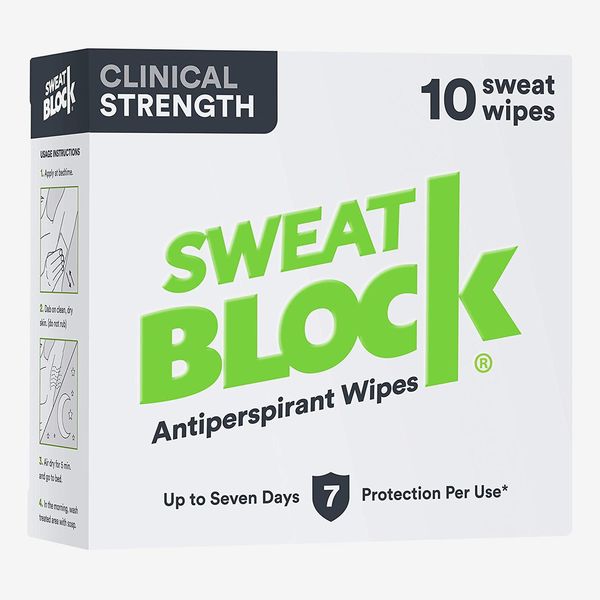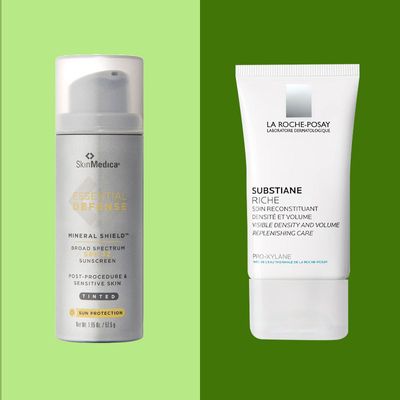
In this article
A new decade brings new skin concerns. “Aging seems to appear rather dramatically and suddenly in your 40s due to the onset of hormonal changes,” says Dr. Zenovia Gabriel, a Newport Beach–based dermatologist who specializes in hormonal skin aging. Estrogen production declines slowly during perimenopause, which typically starts in the mid- to late-40s, then drops precipitously as peri-menopause begins.
What exactly does estrogen loss do to your face? “It really changes your skin. You have a decrease in collagen, with the decreasing estrogen, and along with that your skin gets a lot drier and more sensitive,” says board-certified dermatologist Carmen Castilla. By your 40s, the years of sun damage, oxidative stress, and signs of an overall busy and stressful life will also begin to catch up with you. Loser, crêpey skin becomes more common, as do deeper wrinkles and sensitivity.
Deep-tissue issues (like fat loss and sagging) can only be addressed at a doctor’s office. But that’s not to say that you can’t make a real difference to your skin with your skin-care routine at home. Below, I’ve drawn on my years of beauty reporting, and chatted to over a dozen expert dermatologists and celebrity aestheticians to unlock the best skin-care routine for your 40s. As a new skin-care routine can quickly become expensive, I’ve made sure to include budget-friendly picks for each step. If you’re starting from scratch, you’ll be able to build an entire new routine for less than $150.
Cleanser
Dry skin is common in your 40s, said Dr. Arash Akhavan, a dermatologist in New York City and founder of the Dermatology & Laser Group. This means that you’ll want to look for cleansers that are hydrating, and not stripping. If you’re not double cleansing yet, now is a good time to start.
For the first cleanse, Dr. Heidi A. Waldorf of Waldorf Dermatology Aesthetics in Nanuet, New York, recommends Albolene. “Mature skin tends to be dryer, more fragile, and may have more prominent pores or wrinkles where makeup can stick,” explains Dr. Waldorf. The beauty of Albolene, though, is that it’s so effective you hardly have to scrub, and it feels intensely hydrating. “If Vaseline petroleum jelly and Pond’s cold cream had a baby, it would be Albolene,” says Waldorf.
For step two, Dr. Akhavan recommends the CeraVe hydrating face wash (I like this product, too, and have recommended it time and time again). Glycerin, a humectant, is the base of this cleanser, so it draws moisture into the skin while you wash. Ceramides, lipids that fortify our skin barrier, are also at play here. They help the skin retain more moisture, said Akhavan.
Toner
You may have been (literally) stung by a toner that was too harsh in the past; you’ll be pleased to hear that they’re no longer the alcohol-packed nightmares of our teens. Their new formulations are why they’ve come back into fashion over recent years. Some are packed with gentle acid exfoliants, to slough away dead skin cells, others are packed with hydrating ingredients to nourish the skin and prepare it for the next skin-care step. The toner you need will of course depend on your skin type (and complaints).
“As we age, our cells turn over more slowly due to cellular senescence, and a little help from a chemical or physical exfoliant can be just the thing to remove dead skin cells, unclog pores, and promote skin-cell renewal,” explains Lisa Chevalier, physician associate and founder of SoVous in NYC. Removing these dead skin cells makes our skin appear brighter, and means our pores are less likely to clog up (and break out). You could use something like Biologique Recherche Lotion P50 — the cultish French exfoliating toner beloved by Strategist skincare writer Rio Viera-Newton. “It’s often someone’s first experience with acid exfoliation, and that’s a special moment when you feel the tingle and see your skin smoother the very next day,” says Jordana Mattioli, a medical esthetician in New York City. “Over time, your skin gets even smoother, brighter, and clearer.” It may be pricey, but it shrinks pores, sloughs off dead skin cells, clears up acne, and leaves skin softer in a matter of days.
If Biologique Recherche sounds too sting-y, consider Dr. Jart’s. Although it’s classed as a toner, beauty writer Katheryn Erickson says it feels and acts more like an essence (a K-beauty inspired hydrator). “It contains ceramides, the natural lipids in our skin barrier, and soothing botanicals, making it a great option for ultradry, sensitive types,” she says. “Use it before you apply your serum and moisturizer, or alone if you tend to get oily.”
Moisturizer
“As you age, you’re more likely to have dry, more sensitive skin — so you’re more likely to need a thicker moisturizer, especially in your late 40s,” says Castilla. “Ideally, you’re looking for something that’s going to support that skin barrier that’s a little bit more compromised due to those hormonal changes as you enter perimenopause.” Antioxidants are also a great ingredient to look out for, say Gabriel, and Dr. Michelle Henry, the founder of Skin & Aesthetic Surgery of Manhattan. Henry explains that antioxidants “help to combat free-radical damage from things like UV rays from pollution and from infrared light.”
CeraVe’s simple moisturizing cream shouldn’t be overlooked. (In fact, we recently named it the best moisturizer for mature skin overall.) “This moisturizer notes hyaluronic acid as a hero ingredient, which is popular because it’s known to hold over 1,000 times its weight in water,” explains fellow Strategist beauty writer Tembe Denton-Hurst. “This makes it an effective hydrator and plumper, which can make any fine lines or wrinkles a little more filled in and hydrated.” It also contains deeply moisturizing ingredients such as glycerin and ceramides, is at an affordable price point, is widely available — and is just a great solid option all around.
French brand La Roche-Posay’s antioxidant-packed moisturizer is specifically formulated for older skin. It contains glycerin, shea butter, and Pro-Xylane, which “behaves similarly to hyaluronic acid but has the added benefit of increasing collagen in the skin,” explains Denton-Hurst. “This is a big benefit for aging skin, which produces less collagen over time,” she adds. It’s also thick and creamy, leaving you feeling deeply moisturized as it targets fine lines and wrinkles.
SPF
Protecting the skin from UV-damage is a priority at any age. Much of the aging we experience — fine lines, dark spots, texture changes — is due to sun damage. But of course there’s the more pressing concern of preventing skin cancer. “Ninety percent of all skin cancers are directly related to the sun,” says board-certified dermatologist and founder of Spectrum Skin and Laser Dr. Jeremy Brauer. “I can tell you that the number of patients I’m seeing in their 30s, 40s, and even 50s for skin-cancer surgery is significantly greater than it was at the beginning of my career.”
Most of the experts we spoke to recommend a mineral-based sunscreen to avoid the potential irritation that can come with chemical-based sunscreens. Henry likes this one from SkinMedica, and she echoes what we’ve heard time and time again: Wear sunscreen with at least 30 SPF (50 SPF is even better). She likes this one specifically because it combats blue light and contains antioxidants.
This mineral sunscreen is also completely free of irritants, making it an extra-safe choice for sensitive skin. It’s also a budget-friendly choice.
Serum
Serums have high concentrations of specific active ingredients, designed to target specific skin-care complaints such as the dullness that occurs as we age, dryness, and dark spots.
Applying a vitamin-C serum after cleansing will reduce age spots and uneven out tone that many people experience in their 40s, says Gabriel. Both Gabriel and board-certified dermatologist Dr. Corey L. Hartman, founder of Skin Wellness Dermatology in Birmingham, Alabama, recommended this serum from Vichy. Gabriel likes it because “it combines 15 percent pure vitamin C and hyaluronic acid for brighter skin,” and Hartman is a fan because, even though it’s a drugstore serum, it “gives you all the benefits of some of the higher-end brands, and it’s in a formulation that really works well for most skin types.”
If you can afford it, though, I’d recommend springing for the SkinCeuticals vitamin C with ferulic acid. “SkinCeuticals C E Ferulic was explained to me, as a young beauty editor, as liquid gold,” says Denton-Hurst. “Naturally, when I got my hands on my first bottle, I was excited. And by the end of that bottle, I was hooked. It has been the gold-standard vitamin-C serum for years, so much so that lots of formulas have mimicked the ingredients list, chasing the same results. But nothing beats the original.”
According to Akhavan, dryness and dullness (the effects of increased transepidermal water loss) are common skin complaints among patients in their 40s. If this sounds familiar, your routine needs a hyaluronic acid serum — it’s a powerful humectant, meaning it draws in much-needed hydration. The Jordan Samuel Skin Hydrate Facial Serum cocktail of humectants include glycerin, hyaluronic acid, and aloe-leaf juice (which is also anti-inflammatory).
I also like this more affordable option from The Ordinary. It contains five forms of HA, and adds a nice boost of hydration to the skin.
Retinoid
Retinoid is an umbrella term for a group of compounds derived from vitamin A, including retinol and retinal. It’s a form of vitamin A that breaks down into retinoic acid in the skin and promotes cell turnover. Dr. Hartman says it’s a nonnegotiable in this decade, so even beginners should use it. “It’s the closest thing we have to a holy grail,” he says. “It does everything. It helps with acne breakouts, helps with the skin surface, helps with more effective exfoliation; it gets rid of that dullness, helps with fine lines and wrinkles — it really does it all.” There is an initial potentially irritating purging period, though, so introduce it slowly, and listen to your skin.
While there are plenty of retinol serums out there (more on those below), a beginner might like something like this Olay Regenerist retinol moisturizer, which is a night cream and retinol in one. Gabriel says it’s a great beginner product containing niacinamide, an antioxidant that prevents the irritation sometimes brought on by retinoids.
If you want to step up your retinol from a two-in-one moisturizer, try this. The hesitation with incorporating a retinol into your routine is potential irritation and dry skin, but Hartman says “AlphaRet figured out how to put a prescription-strength retinol and a glycolic acid into a lotion that I’ve yet to see it cause a problem for anybody.” If you do experience any irritation using retinol, he has a trick for that: “Apply the moisturizer first and then put the retinol on top of that. It allows it to get into the skin where it can be effective without causing a lot of irritation on the surface.”
Advanced skin-care users might add retinaldehyde into their routine, which this cream contains. Hartman says it “is one step above in the conversion of retinol so it gets you closer to the retinoic acid [a more potent version of retinol], so you have an effect that’s more apparent more quickly, without a lot of irritation.”
Night cream
Gabriel says that advanced skin-care folks can beef up their nighttime routines to help achieve smooth, plump skin. An ultrahydrating night cream can also soothe the potential irritation that comes from incorporating retinoid into your skin-care routine by giving your skin a dewy layer of hydration to marinate in all night.
Our favorite night cream overall is from … you guessed it, CeraVe. It ticks all of Denton-Hurst’s boxes — “a rich texture, nourishing ingredients, and lots of moisture” — and is as affordable as the rest of brand’s products. It’s also a skin-care-expert favorite. Four of them recommended it to us.
After treating your skin with a retinol or one of the other highly concentrated serums above, you can lock it all in with this repair cream. It contains heparan sulfate analog (HSA), which Gabriel says acts as a growth-factor-like agent and “has been proven scientifically effective in protecting collagen and elastin.”
Eye cream
In our 40s, the wrinkles, crows-feet, puffiness, and hollowness around our eyes really starts to become visible. The skin around our eyes is some of the most sensitive on the body, so along with signs of aging, you may also notice some dryness in the area. That’s why your 40s — if you haven’t already — is a great age to incorporate a nourishing, plumping eye cream into your routine.
If you’ve ever gotten an eye cream and weren’t impressed with the results, it might not be entirely the product’s fault. Hartman says that eye creams in particular are tailored to a specific issue. “Some people get an eye cream and think ‘Oh, it didn’t work,’ when they didn’t really have one that was geared toward what they were in need of,” he says. For wrinkles, Gabriel likes this one from Neutrogena. She says it’s “formulated with hyaluronic acid to help boost and lock in hydration around the delicate eye area.”
Your 40s is also the decade when, if you haven’t started already, you should consider some in-office treatments by a professional dermatologist or esthetician. But if you’re not ready to try injectables, consider this eye treatment for wrinkles. Hartman says it improves the lines that even Botox can’t fix, the ones that are there even when you’re not moving. “It comes in a dispenser that is specifically targeted to be put in high-traffic line-developing areas like around the eyes and around the mouth, and it has a new technology that’s kind of like Botox, which stops the transfer of acetylcholine from the muscle to make the muscle not tire,” he says. “They found that they can stop that same transfer between skin cells to help with those lines that develop even when you’re not moving.”
If your eye concern is less about wrinkles and more about discoloration, Hartman calls this a “workhorse” eye cream. “For people who have that purplish discoloration Isdin K-Ox eyes has vitamin K, which is a unique active ingredient in eye cream that can help with the breakdown of the blood products from the blood vessels that we see around the eyes that cause discoloration,” he says. Because the skin around the eyes is so thin, the blood vessels are more prominent, but this product works to treat that.
Skin-care devices
LED light therapy has exploded in popularity in recent years, with reports backing up the claims of many brands that their masks can help fade dark spots, calm redness, and heal acne scars. Microcurrent devices are also gaining in popularity — they claim to tighten the face up, which is great if you’re beginning to notice sagging or crêpiness in your 40s.
This mask has been named countless times to us by experts as their favorite LED device. The Omnilux site shows more than 40 peer-reviewed published studies backing up its efficacy, which is more than any other device mentioned in our interviews.
To keep your face tight in between office treatments, Henry recommends an at-home microcurrent device like NuFACE. “It’s the one that I’ve tried that I think you can get really good results from, if you’re consistent with the treatment,” she says, adding that if you use it every day “it tightens and stops that sagging gravity effect. It just keeps everything nice and lifted.”
A (less expensive) skin-tightening facial device
If you’re on a budget, Hartman says a low-tech tool like a gua sha stone can deliver similar results. “Gua sha can be used all over the body, but it has an array of skin-care benefits when used as a facial tool — among them are the ability to help drain lymph nodes, sculpt facial muscles, soften fine lines and wrinkles, release tightness, and decrease puffiness or inflammation by accessing tough-to-reach pressure points underneath the skin and stimulating microcirculation of your skin’s soft tissue,” former Strategist writer Rio Viera-Newton reported. This one is under $50 and from one of our favorite AAPI-owned brands.
The Strategist is designed to surface the most useful, expert recommendations for things to buy across the vast e-commerce landscape. Some of our latest conquests include the best acne treatments, rolling luggage, pillows for side sleepers, natural anxiety remedies, and bath towels. We update links when possible, but note that deals can expire and all prices are subject to change.

